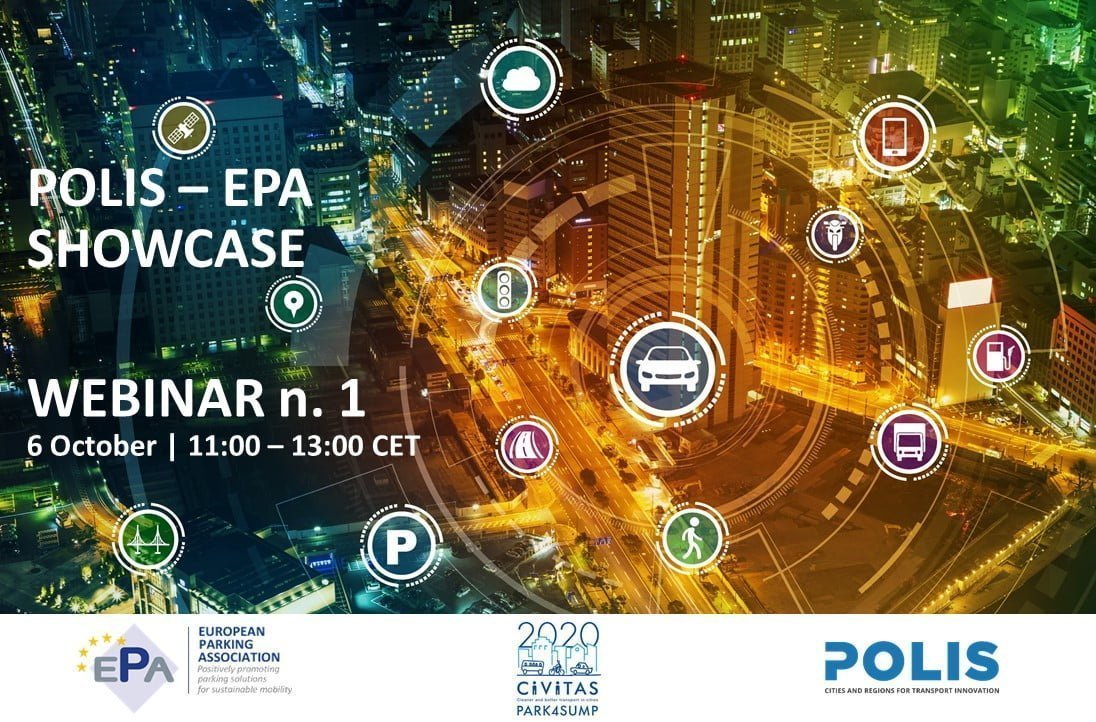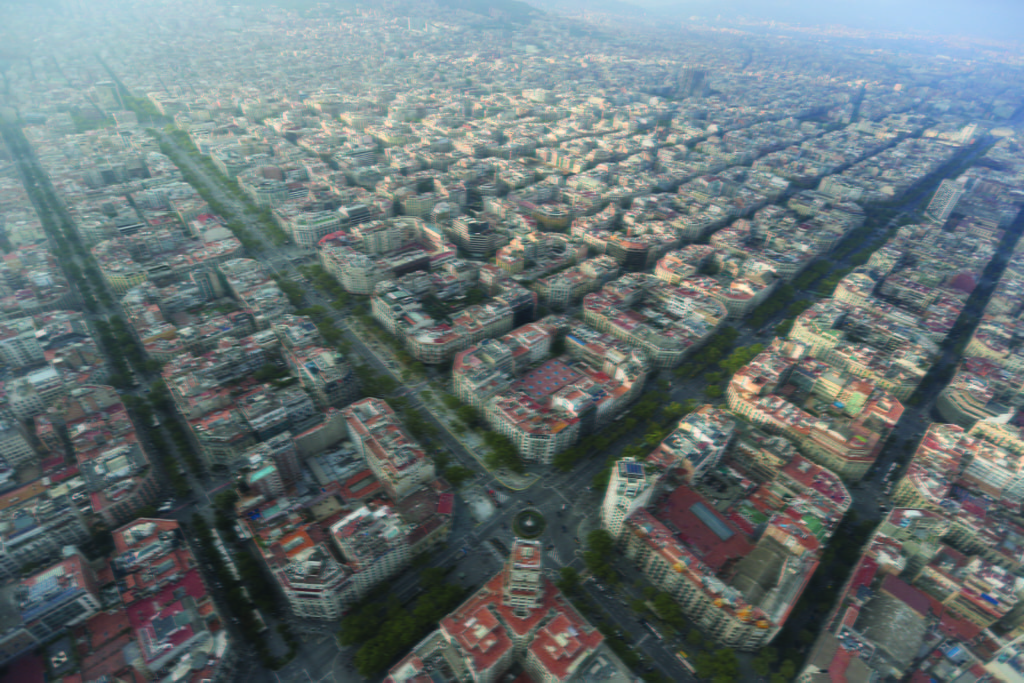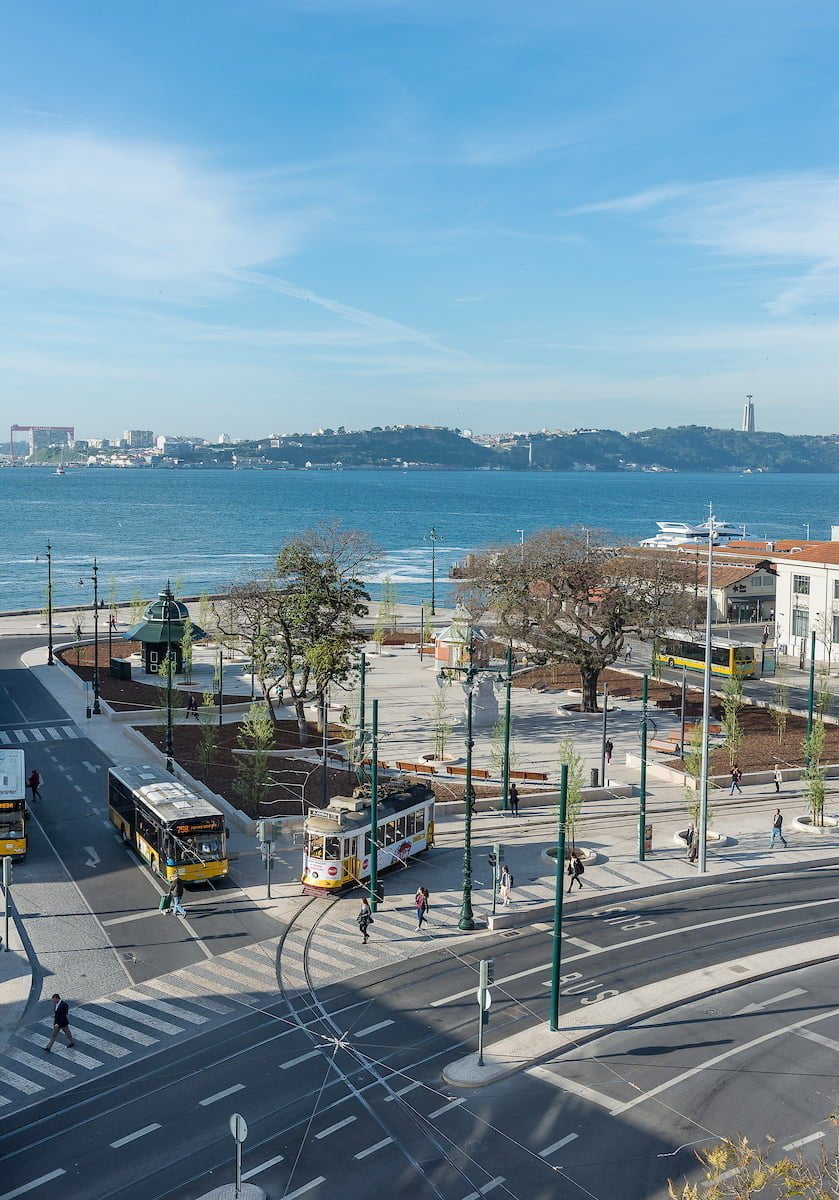Lisbon, Barcelona, Milan and other cities discuss the future of urban parking
On 6 October 2021, POLIS and the European Parking Association (EPA) kicked off their joint webinar series discussing the future of urban parking.
Urban mobility is at a critical juncture. As urban transport shifts towards active travel, public transport and e-mobility, parking must not just respond to these changes, but facilitate these cleaner, smarter modes of travel. The parking sector has the knowledge, experience and technology to deliver.
This first webinar, "On-street and kerbside vehicle management: Parking as a tool enabling the transition to sustainable urban mobility" which drew over 200 registrations, brought together viewers from cities, industry partners and other stakeholders. It heard from cities across Europe about how they are adapting parking strategies for emissions reduction targets, the rise of e-mobility and active travel, as well as responding to pandemic induced travel shifts.
This webinar explored the solutions. From Lisbon to Oxford, cities discussed parking solutions for cars and delivery vans, as well as the setup of EV charging services, access management, permits, seamless payment… and more!
“Parking and curbside management are intimately linked to logistics, multimodal travel, ITS and many more aspects of urban mobility”, said Laurence A. Bannerman president of the EPA.
“With these webinars we examine parking as an important tool for reaching mobility and climate goals, as we have seen, it is important to integrate new and smart solutions.”
Lisbon
The webinar kicked off with a presentation from the city of Lisbon, a POLIS member and multiple EPA Parking Award candidate and winner. Parking is a critical issue for the Portuguese capital, with 370,000 vehicles entering city everyday and 200,000 residents’ vehicles, accommodating private vehicles requires flexible and smart solutions.
Although active travel and public transport use is growing, 46% of journeys continue to be completed using private vehicle.
“Parking must be fully articulated within the city’s mobility system,” said Óscar Rodrigues from Lisbon.
Lisbon is pursuing real-time information about on-street and off-street parking as well as new parking adjacent to public transport hubs, in order to encourage multi-modal travel, and chase the city’s goal of 66% of travel via alternative modes. Like many cities, Lisbon has also adapted parking for different uses such as seating- creating flexible and attractive urban spaces.
It is not just private cars which new parking systems will serve. The city is also establishing bike parking below and underground to facilitate the growth in cycle transit.
To demonstrate Lisbon’s dramatic change in parking infrastructure, Mr Rodrigues displayed images of the capital’s main squares; once parking lots, now beautiful pedestrianised areas- with car parking moved centrally under ground and further away from the city centre.
Barcelona
Barcelona, another EPA Parking Award winner, also joined the webinar to outline how the city is establishing a new roadmap for vehicle parking.
The POLIS member city is one of the densest cities in Europe, therefore it is critical to manage last mile distribution in order to mitigate congestion and air pollution.
The city’s Last Mile strategic approach takes into account logistics, public space, sustainability and other values, trialling new solutions through a range of pilots.
“Our parking spaces are used by a range of individuals from delivery drivers to service providers and residents,” said Daniel Aicart, Head of Strategic Planning and Analysis
New parking solutions are being constructed around changes in mobility and freight patterns including electric vehicles, micro platforms and pick-up points and lockers.
These new models have required creation of robust and transparent relationships between industry and local authorities.
“It is important to have a clear roadmap, and build consensus along the way,” said Aicart.
Milan
Milan ATM are on a mission to move parking from the end of a travellers’ journey… to the start!
“We are looking to move to a new paradigm, where parking is not static, but flexible, using urban space in different way” said Roberto Carreri, Research, Development and Digital Innovation Manager at ATM, the public transport company for Milan.
The organisation transports 800 million passengers per year, across 95 municipalities.
Data analysis and digitalisation is at the heart of Milan’s integrated mobility ecosystem. Ensuring parking responds to user needs, demand and predictive analysis is essential, creating more effective, convenient, easy, fast and efficient services that saves time and money.
“Digital transformations are driving new parking solutions,” said Carreri.
Milan is currently using a range of parking monitoring devices, including cameras which are able to scan parking permits in real time, while Mobility as a Service (MaaS) is integrating payments onto mobile applications.
Oxford
The historic city of Oxford is also seeking to implement new parking solutions to deter congestion created by commuter and tourist traffic. The city attracts 7-million day‑time and staying visitors per year, generating £780 million of income for local Oxford businesses; however, this led to rising traffic flows into the city- with around 38,000 vehicles travelling along the arterial routes into the City centre each day.
The city is launching a trial of a National Parking Platform (NPP) based on the Alliance for Parking Data Standards, a publicly owned, not for profit, national facility that enables parking operators (public or private) to communicate digitally with Service Providers.
The platform is designed to aggregate information about parking space availability provided by car park operators and local authorities.
Operators will be able to digitise compliance monitoring without the need for local digital infrastructure, as well as publicise occupancy in real time, while service providers will be able to Pay Operators for parking without the need for a contract with each one.
“This will benefit the council, it will bring a shift towards cashless payments across the county, as well as better service for the user,” said Emma Liptrot, Deputy Civil Enforcement Manager at Oxford City Council.
Colchester
The webinar then travelled to another UK city, Colchester. The city is preparing to adapt their parking infrastructure in response to pandemic induced changes in mobility and structural limitations created by the city’s Roman urban geography.
Colchester expanded its cycle lanes during the pandemic, which link railway stations, the city centre and key services.
“The pandemic may have changed the way we work forever,” said Richard Walker. “So, we are looking for new ways to use these spaces.
Colchester is currently trialling ‘Park Active’, a scheme, developed by the British Parking Association, which is replacing road space with cycle parking, responding to the rapid rise in cycling in the UK- which rose by almost 50% during the pandemic.
The city has not stopped here, parking is continually evolving.
“We are continually expanding our bicycle, scooter and pedestrian infrastructure, as well as implementing lockers, to allow people to shop in the town centre, without requiring parking within close proximity,” said Walker.
Krakow
The final presentation came from the Polish city of Krakow, one of the cities involved in the Park4SUMP project.
Car travel accounts for almost 40% of transit in the city, however, the city is working to shift this modal share.
Krakow is working on metropolitan SUMP with its 15 municipalities, which addresses transport policy, parking and an Integrated Transport Plan.
The city’s new parking program looks to integrate transit modes and open up public space, while continuing to meet demand.
The program has needed to overcome a range of challenges, including lack of agreement with shopping centre managements and delays in park and ride investments; however, the city is now reviewing the parking plans to ensure parking enabled active travel and moves towards increased use of off street solutions.
Key takeaways:
- Integrated urban mobility strategies are the responsibility of the local authorities and a key enabler is the vehicle parking management activity.
- Engage citizens in the parking process: Smart and flexible parking solutions are required, but in order to encourage compliance, citizens need to be engaged in the establishment of this infrastructural change..
- Digitisation is essential: To create fast and flexible parking, online payments and real time monitoring, digital platforms and data management is key.
- Manging tourist traffic: As tourists begin to flock to city’s again, visitor parking must be managed effectively, combined with encouraging use of active travel and public transport.
- Accommodating electric vehicles: e-mobility is on the rise, prompting a need for rapid changes in on-street charging facilities. Cities are currently rolling out fast charging on street, while reserving off-street spaces for slower charging.
- Communication: communicating changes in parking are key to ensuring users understand new uses of space and payment methods. This requires use of signage, social media, websites and other digital and physical channels.
- Continuing to accommodate vulnerable travellers: As parking is moved away from urban centres and payment is digitalised, disabled drivers and others, must continue to have their needs served.
About the webinar series:
POLIS and the EPA work closely together, particularly on Park4SUMP, a European project which brings together 16 cities, working on new methods for parking and integrating parking within sustainable urban mobility policies.
The webinar also follows from POLIS’ Parking Working Group, which facilitates coordination between authorities and professionals in charge of parking policy, on-street and off-street, public and private, and urban planning.
The EPA-POLIS 2021/22 series of webinars will continue over the next few months and will be presenting state of the art solutions where the accent will be on the operational, environmental and economic opportunities that are generated by integrated vehicle parking management.


